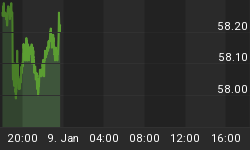NEW YORK, NY (KWR) - February 8, 2012 -- As unrest, violence, and war spreads across the Middle East, observers are struggling to keep pace with events. Anti-government protests have toppled dictatorial regimes in Tunisia and Egypt, challenged the authority of Iran's mullahs, monarchies in Jordan, Saudi Arabia, and Bahrain, and dictatorships in Syria, Yemen, and Libya. Libya has descended into a bloody civil war drawing international military action in support of anti-government forces.
A major step for Myanmar came on January 17, 2013 when it was announced that the Southeast Asian country is beginning to clear its hundreds of millions of dollars in arrears owed to the World Bank (a total of $440 million) and the Asian Development Bank ($512 million). The money put up for this normalization of relations with two of Myanmar's major creditors came from a bridge loan from the Japan Bank for International Cooperation. According to a World Bank press release, Myanmar will accelerate reforms with the clearance of arrears to the bank and the Asian Development Bank. Myanmar's relations with the World Bank and Asian Development Bank were earlier complicated by human rights related sanctions against the country.
The bridge loan is being followed by a $512 million loan package from the Asian Development Bank, which was announced on January 28, 2013. This is the first Asian Development Bank loan to Myanmar in almost 30 years and is earmarked to finalize arrears clearance and sustain government efforts to revamp the national budget process and modernize tax administration. Furthermore, it will support trade policy reforms and capacity development, improve the investment climate and small and medium-sized enterprise development. According to Stephen Groff, Vice President of Operations for East Asia, Southeast Asia and the Pacific: "This is a historic tipping point for Myanmar. To be sure the country is best positioned to benefit from the resumption of donor aid, we are focusing first on building blocks for stability and sustainability, which will ultimately lead to major investments in road, energy, irrigation and education projects, as well as investments in other sectors."
There are three significant factors at play in cleaning up Myanmar's debts to the World Bank and Asian Development Bank. First and foremost, by putting repayments back on track with these two developmental organizations, Myanmar is unblocking a potential source of future loans for things such as infrastructure. That is badly needed in a country that lacks a consistent supply of energy, as reflected by daily electricity cuts in Yangon and the new capital of Nay Pyi Taw. According to an IMF report (September 2012), "Roads are poor, financial services are rudimentary, and living standards remain among the lowest in the region. The lack of skills in younger generations points to the erosion of human capital caused by the poor education policies over the past few years." Consequently, normalizing relations with two key multilateral lending agencies is an important step in the right direction.
Second, the Japanese have seized the opportunity in recognizing Myanmar's opening to the outside world. Myanmar, a country of 55 million people, has a vast array of natural resources and could develop into a middle class market over time. At the same time, Myanmar's willingness to deal with Japan as a close partner is important as it provides both countries a geopolitical friend vis-a-vis a more assertive China. It should not be forgotten that Myanmar's opening over the past two years was partially stimulated by local concerns that their country was being taken over by China. Consequently, the development of strong Japanese-Myanmar relations could be a new cornerstone to regional geopolitics. The New York Times' Shibani Mahtani (January 28, 2013) observed: "The Japanese hope that they, as well as the country's companies, will be at the forefront of Myanmar's rapid transformation from a pariah state to one of Southeast Asia's most promising economic opportunities."
Third, Myanmar's efforts to normalize relations with the World Bank and Asian Development Bank send a powerful signal to the international business community that the country is working hard to make itself an attractive place to do business. While private sector debt remains a challenge, the clearing of public sector debt allows the once isolated country to work more closely with development partners to assess Myanmar's most pressing needs. Along the same lines, it helps the government and the multilaterals to determine a pipeline of priority projects.
Myanmar shares borders with three regions that have implemented considerable economic reforms - China, India and Southeast Asia. All three regions have become an integral part of the global economy, taking advantage of international trends in trade and investment to achieve enviable levels of economic growth and development in emerging markets. In Southeast Asia, Thailand, Singapore, Malaysia and Indonesia are regarded as highly successful on the economic front. Other countries, such as the Philippines are catching up and Vietnam is making more gradual progress. Myanmar is a member of the Association of Southeast Asian Nations (ASEAN) group as are most of its neighbors, but has lagged behind in its economic development. With the push to normalize relations with its major multilateral development bank creditors, Myanmar is taking a step to joining the ranks of Asia's tiger economies.
















